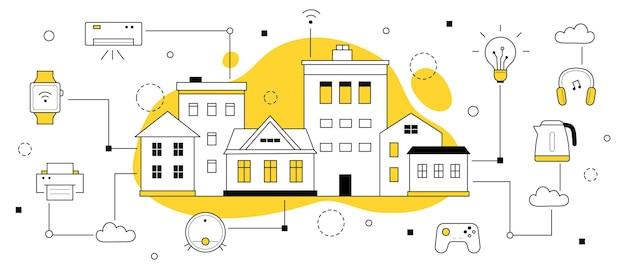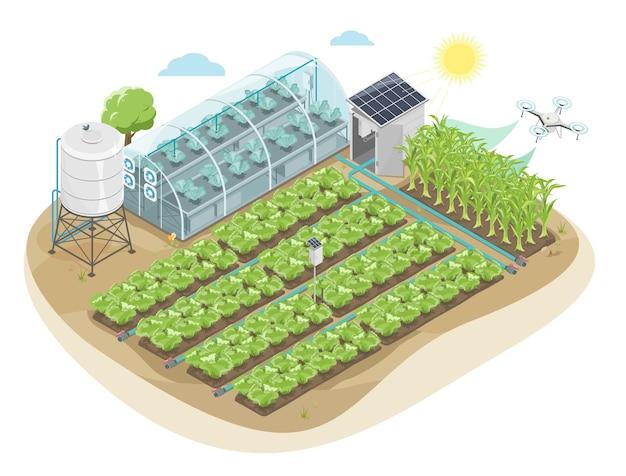Imagine a world where your devices seamlessly connect and communicate with each other, making your life easier and more efficient. Well, welcome to the world of the Internet of Things, or IoT. In this blog post, we will delve into the fascinating realm of IoT and explore its four main components, which form the foundation of any IoT system.
But before we do that, let’s quickly address some burning questions. What exactly is IoT? Why is it gaining so much momentum? And does it require coding skills? Simply put, IoT refers to the network of physical objects or “things” embedded with sensors, software, and connectivity that enables them to collect and exchange data. From smart homes and wearables to industrial automation and smart cities, IoT has found its way into various domains, promising unprecedented connectivity and automation.
In this age of hyper-connectivity, IoT has become more relevant than ever. With the advancement of technology and the increasing number of internet users, IoT has the potential to transform our lives in profound ways. It allows us to remotely control and monitor devices, gather valuable data for analysis, and create smart systems that adapt to our needs. But like any other technology, IoT comes with advantages as well as disadvantages, which we will discuss later in this post.
Now that we have a better understanding of what IoT is and why it matters, let’s explore its four main components that work together to create a connected ecosystem: sensors and actuators, connectivity, data processing, and user interface. By dissecting these building blocks, we can gain deeper insights into how IoT systems function and the immense possibilities they hold.
So, fasten your seatbelts as we embark on this enlightening journey through the world of IoT, unraveling its key components and unraveling the endless opportunities it presents.

What are the 4 Main Components of an IoT System
In order to understand the inner workings of an IoT (Internet of Things) system, it’s essential to dive into its core components. Let’s break it down and explore the four main elements that come together to create this interconnected marvel.
1. Sensing and Communication Devices
At the heart of every IoT system are the sensors and communication devices. These smart gadgets have the remarkable ability to collect data from the physical world and transform it into actionable information. Whether it’s temperature, humidity, motion, or even air quality, the sensing devices play a vital role in capturing real-time data. Think of them as the “eyes” and “ears” of the IoT ecosystem.
2. Data Storage and Processing
Once the sensors have done their job and harvested a plethora of valuable data, it needs to be stored and processed. This is where the second component kicks in – data storage and processing. Massive databases or cloud storage systems are used to retain this treasure trove of information. And let’s not forget about the brains behind it all, the IoT system’s processing capabilities. Powerful algorithms and edge computing technologies help make sense of the data, turning it into meaningful insights.
3. Network Infrastructure
For IoT devices to communicate effectively, they rely on a robust network infrastructure. This component makes it possible for the devices to interact seamlessly and transmit data to the desired endpoints. From traditional Wi-Fi to advanced technologies like 5G, the network infrastructure plays a crucial role in ensuring a smooth flow of information. Just imagine a bustling highway of connected devices, exchanging data at lightning-fast speeds.
4. User Interface
Last but certainly not least is the user interface (UI). After all, what good is an IoT system if humans can’t interact with it? The user interface serves as the gateway for users to monitor and control the connected devices. From sleek mobile apps to intuitive web portals, the UI provides users with a glimpse into the IoT world. With just a few taps or clicks, users can view real-time data, customize settings, and even automate various tasks. It’s like having a digital assistant at your fingertips, ready to cater to your every command.
And there you have it – the four main components of an IoT system. From the mighty sensing devices to the intricate network infrastructure, each element plays a crucial role in creating a truly interconnected world. So, the next time you encounter an IoT system, remember these components and appreciate the complex dance they perform to make our lives more convenient, efficient, and, dare we say, fun.

FAQ: What are the 4 main components of an IoT system
Welcome to our FAQ section on the four main components of an IoT system! Here, we’ll address some common questions you may have about the fundamental building blocks of the Internet of Things (IoT) and provide you with entertaining and informative answers. So, without further ado, let’s dive in!
What are the three applications of IoT
IoT has a wide range of applications, but let’s focus on three popular ones:
-
Smart Homes: Imagine controlling your lights, thermostat, and even your coffee maker with just a touch on your phone. With IoT, you can turn your living space into a futuristic hub of interconnected devices.
-
Industrial Automation: IoT is revolutionizing industries like manufacturing and logistics by enabling remote monitoring and control of machinery. This helps increase efficiency, reduce costs, and minimize errors.
-
Healthcare: IoT’s impact on healthcare is astounding. From wearable devices that track patients’ health conditions to smart pills that transmit data, IoT is helping doctors provide better care and patients take control of their well-being.
Why is IoT all the rage now
Well, IoT’s popularity has soared in recent years for a few reasons:
-
Advancements in Technology: Thanks to increasingly powerful microprocessors, the cost of IoT hardware has come down significantly. This has made it more accessible for both individuals and businesses to adopt IoT solutions.
-
Connectivity: The widespread availability of high-speed internet and the rollout of 5G networks have made it easier to connect and communicate with IoT devices. This has opened up a world of possibilities.
-
Real-World Applications: The practical applications of IoT are turning heads. From optimizing energy consumption to streamlining supply chains, businesses and individuals are witnessing the tangible benefits of adopting IoT solutions.
What is IoT, and can you provide an example
Sure, IoT stands for the Internet of Things. It refers to a network of physical objects, or “things,” embedded with sensors, software, and connectivity, allowing them to exchange data with each other and with their human counterparts.
To give you an example, imagine you’re driving home on a scorching summer day. With IoT, your smart air conditioning system can detect your proximity and start cooling your house before you even step inside. It’s like having a personal climate concierge!
Does IoT require coding skills
Good news! You don’t necessarily need to be a coding wizard to embrace IoT. Many IoT platforms provide user-friendly interfaces that allow you to configure and customize your IoT devices without writing a single line of code. However, having some coding knowledge can come in handy if you want to dig deeper and create more complex IoT applications.
Which software is commonly used for IoT
When it comes to IoT software, there are plenty of options available. Some popular choices include:
-
Arduino: This open-source platform is great for beginners and hobbyists. It offers a simple programming language and a vast community of enthusiasts.
-
Raspberry Pi: Another powerful and versatile platform, the Raspberry Pi can be used for various IoT projects. It runs on Linux and supports multiple programming languages.
-
Microsoft Azure IoT Suite: This cloud-based service from Microsoft provides a range of tools and services for building and managing IoT applications at scale.
Ultimately, the choice of software depends on your specific needs and preferences.
What is the potential of IoT
The potential of IoT knows no bounds! Here are just a few ways it can revolutionize our world:
-
Enhanced Efficiency: IoT can streamline processes, automate tasks, and optimize resource allocation, leading to improved efficiency in various sectors.
-
Improved Decision-Making: By providing real-time data and actionable insights, IoT equips businesses and individuals with the information they need to make more informed decisions.
-
Better Quality of Life: From smart cities that reduce traffic congestion to wearable devices that monitor health, IoT has the potential to significantly enhance our overall quality of life.
What are the advantages and disadvantages of IoT
Like any technology, IoT has its pros and cons. Let’s take a look:
Advantages:
– Increased efficiency and productivity
– Enhanced convenience and automation
– Improved safety and security
– Cost savings through optimized resource management
Disadvantages:
– Privacy and security concerns
– Potential for data breaches and cyberattacks
– Complexity in integrating diverse devices and systems
– Dependence on stable connectivity and power supply
What is the IoT ecosystem
Think of the IoT ecosystem as a bustling city, with various components working together harmoniously. In this interconnected system, you have devices (things) equipped with sensors, networks that enable communication, cloud platforms for data storage and processing, and last but not least, the users who interact with these devices and benefit from their functionality. It’s this cohesive ecosystem that powers the IoT revolution!
Who is the leader in IoT
While there are many major players in the IoT realm, one company that has been at the forefront is Amazon. With its widely popular Alexa voice assistant and a range of IoT devices like Echo speakers and smart home products, Amazon has made significant strides in shaping the IoT landscape.
What is the future of IoT
The future of IoT is incredibly bright! As technology continues to advance, we can expect to see even more innovative applications and seamless integration of IoT in our daily lives. From autonomous vehicles to smart cities, IoT will continue to transform industries, enable new possibilities, and make our lives more connected than ever before.
And that wraps up our informative and entertaining FAQ section on the four main components of an IoT system. We hope you found it helpful and that you’ve gained a better understanding of how IoT works and its potential. Stay curious, embrace IoT, and get ready for a future where everything is just a click away!
Interested in learning more about IoT? Check out our in-depth guide on the “Seven Wonders of the IoT World!”
Last updated: January 2023
